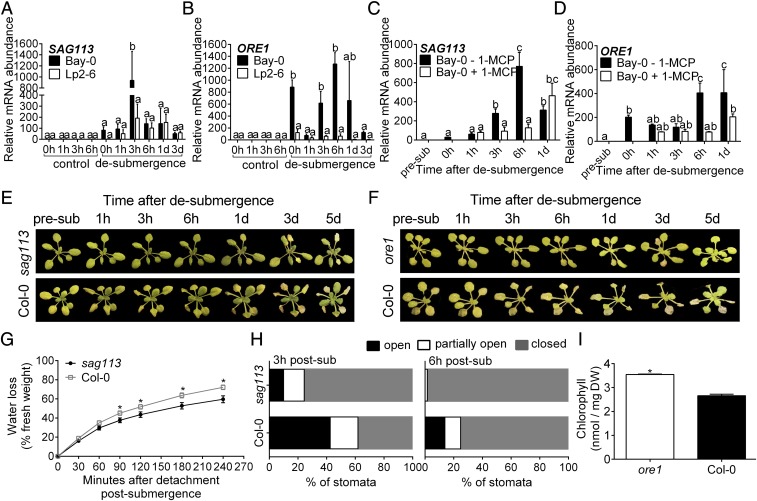Fig. 7.
Ethylene-mediated dehydration and senescence in Bay-0 postsubmergence link to the induction of SAG113 inhibiting stomatal closure and ORE1 promoting chlorophyll breakdown. (A and B) Relative mRNA abundance of SAG113 (A) and ORE1 (B) measured by qRT-PCR in Bay-0 and Lp2-6 intermediary leaves following desubmergence after 5 d of submergence (n = 3 biological replicates). (C and D) Relative mRNA abundance of SAG113 (C) and ORE1 (D) measured by qRT-PCR in intermediary leaves of Bay-0 plants treated with and without 1-MCP (n = 3 or 4 biological replicates). (E and F) Representative images of sag113 (E) and ore1 (F) mutants during recovery after 4 d of submergence compared with wild-type Col-0. (G) Water loss in sag113 and Col-0 after detachment from roots upon desubmergence compared with the initial fresh weight (n = 4). (H) Stomatal classification at 3 and 6 h after desubmergence for sag113 and Col-0 submerged for 4 d (n = 120–180). (I) Chlorophyll content in whole rosettes of ore1 and Col-0 after 5 d of recovery following 4 d of submergence (n = 3). Data represent mean ± SEM. Different letters represent significant difference, and asterisks represent significant difference between genotypes at the specified time point (P < 0.05, two-way ANOVA with Tukey’s multiple comparisons test).

